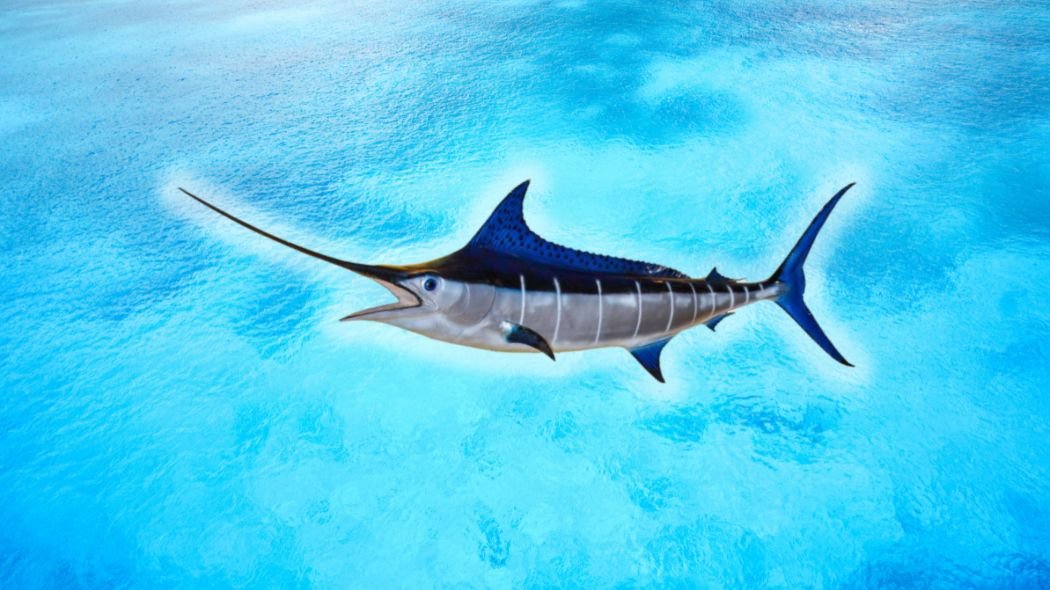Pacific Blue Marlin: Facts, habitat, fishing methods, species
Marlin is a species of predatory fish found in tropical and warm temperate oceanic waters worldwide. They have an elongated body with a spear-like snout or bill, long rigid dorsal fin, and cobalt blue on the top and silvery white on the bottom. This article will provide facts about marlin, discuss different species, and look at the fishing industry that has grown around them.
Pacific blue marlin, Makaira nigricans, or Kajiki: Quick Overview and interesting Fun Facts
- Pacific Blue Marlin (Makaira nigricans) or Kajiki is known in Hawaiian as a’u.
- Their flesh ranges from white to pink and has a naturally lacquered appearance.
- In Hawaii, fishermen use trolling boats and longliners to fish Marlin.
- The fish is most abundant between June and October.
- Prepared raw, grilled, fried, sautéed, and smoked.
- Hawaii blue marlin contains healthy lean protein, is low in saturated fat and sodium, is rich in niacin, vitamin B6, vitamin B12, and selenium, and is a good source of iodine and magnesium.
- Hawaii blue marlin provides about 200 mg of omega-3 fatty acids (DHA and EPA) per 4-ounce serving of fresh fish.
Classification of Marlin fish
Marlin belongs to Family Istiophoridae, Order Istiophoriformes, Kingdom Animalia, Phylum Chordata, and Class Actinopterygii.
Marlin Habitat and range
Marlin’s habitat is in the Indian, Pacific, and Atlantic Oceans, usually warm, well-mixed surface waters. They spend most of their time in the water column up to 100 meters deep.
Marlin Species
The main marlin species are Atlantic & Pacific Blue Marlin, Black Marlin, White Marlin, and Striped Marlin. Other related species include Atlantic & Indo-Pacific Sailfish, Longbill & Shortbill Spearfish, and Swordfish (also read: best way to cook swordfish steak).
Blue Marlin Facts
Blue marlins are scientifically known as Makaira nigricans, and they widely occur in tropical oceanic waters of the Atlantic and Indo-Pacific. They have limited thermoregulation ability and are eclectic feeders who enjoy skipjack tuna, frigate mackerel, squid, mackerel, and scad. Females are the largest, rarely do males exceed 200 pounds, and any blue marlin weighing over 1,000 pounds is called a grander.
Atlantic Blue Marlin
Atlantic Blue Marlin live in temperate oceanic waters of the Atlantic and Indio-Pacific. They are popular targets for recreational fishermen, with some of the best fishing destinations being Hawaii, Costa Rica, Bermuda, Mexico, the Dominican Republic, and the Bahamas.
Marlin Fishing Techniques
Popular game fishing techniques for marlin include trolling with artificial lures or dead-rigged natural bait and slow-trolling with live bait. Popular lure types include Mold Craft, Black Bart, Moyes, Koya, Coggins, and Fathom. Benefits of using artificial lures include trolling at higher speeds and covering more ground. In contrast, benefits of natural bait include circle hooks which reduce gut-hooking and higher hook-up-to-release ratio. Live bait includes blackfin tuna, bonito, and skipjack.
Marlin fishing typically involves lures fished at 7.5 to 15 knots, with four or more lures trolled at varying distances. When fishing with live bait, anglers often use smaller tuna species.
Threats and bycatch
Threats to marlin populations come from commercial fishing, bycatch, recreational competitions, and lack of regulations. Regulations are in place to minimize bycatch in tuna and swordfish fisheries.
Population Status
Marlin fish are not currently overfished or subject to overfishing, and the gear used rarely contacts the ocean floor. Fishery management tools like vessel maximums, permits, logbooks, observers and vessel monitoring systems, prohibited areas, and requirements designed to protect turtles are all employed.
Commercial Fishery
In 2020, commercial fishing boats caught approximately 900,000 lbs of Pacific blue marlin. The sale and commercial possession of marlin is prohibited under the Billfish Conservation Act and regulations. Exemptions exist for Hawaii and Pacific Insular Areas, and pelagic longlines are typically used due to their minimal impact on habitat. There are rare interactions with protected species and a high survival rate.
Recreational Fishery
In 2021, recreational fishermen caught about 710,000 lbs of blue marlin. They are a popular target, and there are yearly fishing tournaments in Hawaii, but little bycatch is associated with this activity.
Conclusion
In conclusion, Indo-Pacific Blue Marlin is a highly migratory species in the Indian and Pacific Oceans. They are apex predators with spear-shaped upper jaws and can grow up to 11 feet long. The Blue Marlin is among the most sought-after species due to its large size and abundance in tropical and subtropical waters worldwide. It is prized for sashimi and sport fishing and popular for catch and release. Despite regulations and tools designed to protect this iconic species, there are still threats from commercial fishing, bycatch, and lack of recreational regulations that must be addressed to ensure their continued existence.

